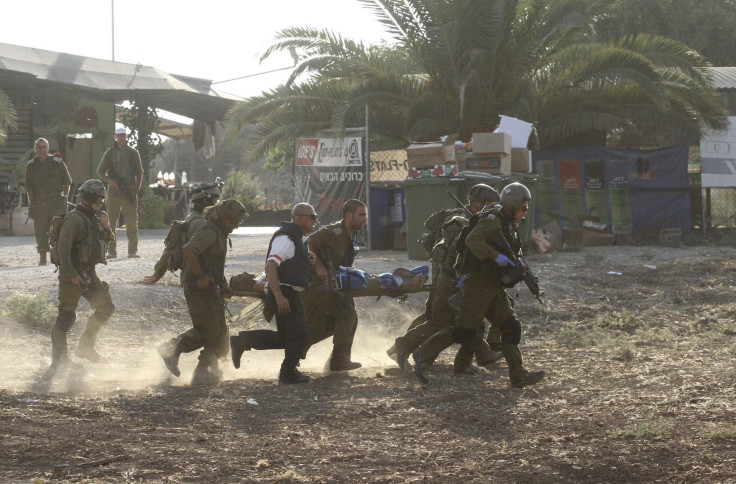As Israel Announces Partial Withdrawal From Gaza, North Gaza Strip Is Still A War Zone

GAZA CITY, Gaza Strip -- On Sunday, Israel said it would withdraw most of its soldiers from the Gaza Strip, signaling a possible end to a monthlong conflict and the ability for hundreds of thousands of displaced people to return to their homes -- if they still exist. But the withdrawal has not led to an end to the fighting. Just hours after the announcement, heavy combat raged in the north of the Gaza Strip near the Erez border crossing with Israel, and south near the Rafah border crossing with Egypt.
Beit Lahia, Jabaliya, and Beit Hanoun are neighborhoods north of Gaza City that experienced some of the worst bombardment yet Sunday. For weeks, Palestinians from those areas have been evacuated and moved to shelters in Gaza City, as the north remained a de facto no-go zone, a front line where Hamas militants and Israeli soldiers regularly fought. Taxi drivers refuse to drive past the edge of Gaza City, and humanitarian organizations have to parcel out the delivery of supplies through the Erez border. In Gaza, the north is notorious for being an active battleground.
Sunday’s announcement gave Palestinians some hope that the withdrawal of Israeli troops from those areas would allow them to return home. But since the announcement, nothing has changed. The north is still dangerous, as is the south. For example, more than 70 people were killed near the Rafah border crossing as a result of Israeli shelling last week. A Human Rights Watch report published Monday charged that Israeli forces fired on Palestinian civilians trying to flee the southern town of Kuza'a.
The bloodshed, mainly in the form of shelling, is now encirling Gaza City from all sides. It is moving up from the south, down from the north, and west from Shejaiya, where more than 20 were killed at a market last week in an Israeli bombardment.
Palestinians with foreign passports, journalists and aid workers are having an increasingly difficult time leaving Gaza. Sunday afternoon, journalists attempting to cross into Israel through Erez in a United Nations-marked bus were asked to turn back to Gaza City on their first attempt to get out, just minutes away from the border post, to avoid fighting. Blasts could be heard from the east, west and north, but it was unclear who was firing.
The bus turned back toward safety. Hours later, finally allowed to make its way toward the Erez post, the bus had to drive through artillery shelling, in one case with a massive blast missing it by just 30 feet (10 meters). Shelling continued even as the bus drove away from the scene.
The neighborhoods in the north, especially Beit Hanoun and Beit Lahia, are now hollowed out from intense bombardments and firefights. Journalists returned to Beit Lahia after Israeli soldiers were said to have withdrawn Saturday night. Although houses and apartment complexes are still standing, electric wires have fallen and chunks of walls from the bombed buildings are scattered throughout the streets. Most of the area is unlivable.
Gaza City is currently hosting tens of thousands of refugees in U.N.-operated shelters. Although it is considered by both Palestinians in Gaza and journalists as a relatively safe area, it sits in the eye of the storm. Palestinians here said they do not know how much longer the bombardments will continue outside of the central part of the city.
© Copyright IBTimes 2024. All rights reserved.











